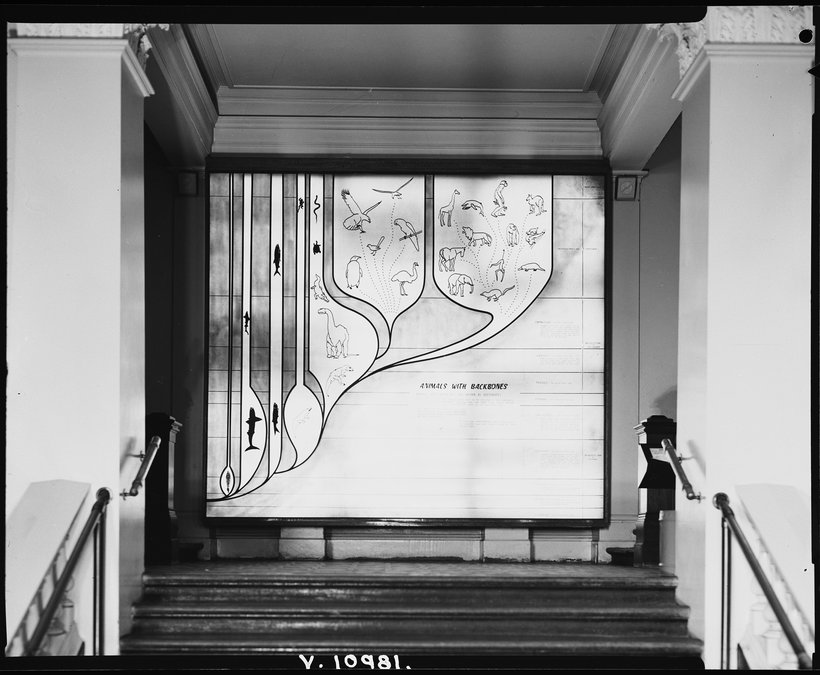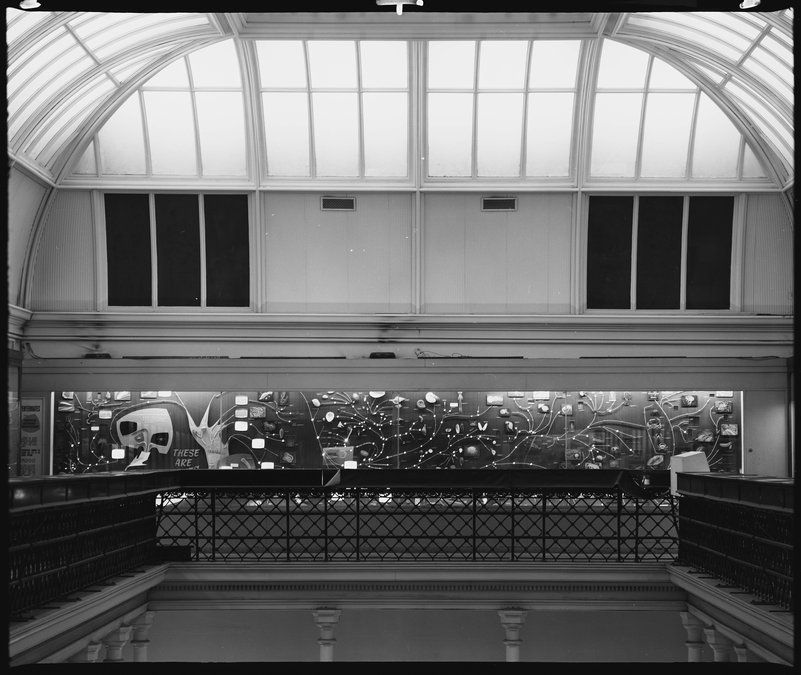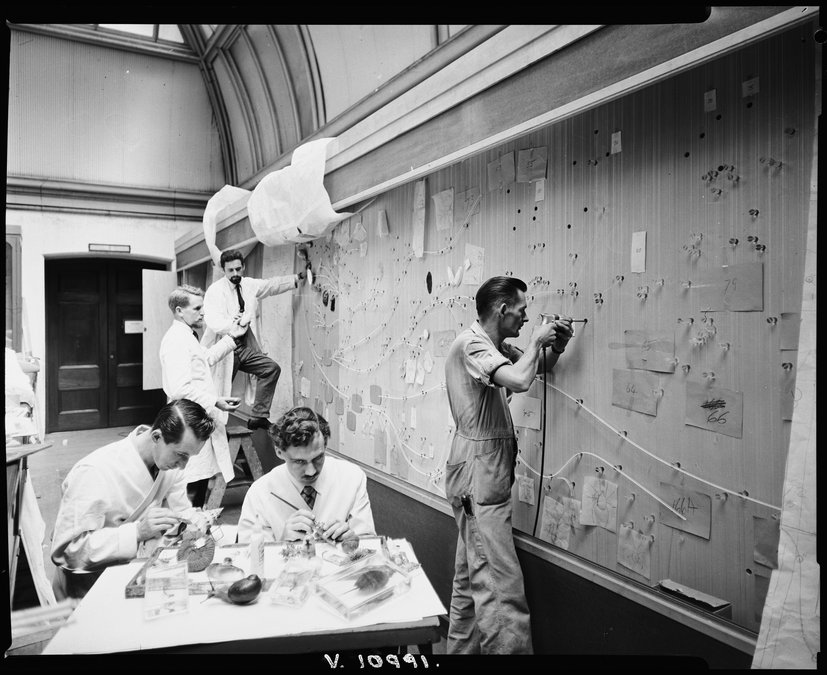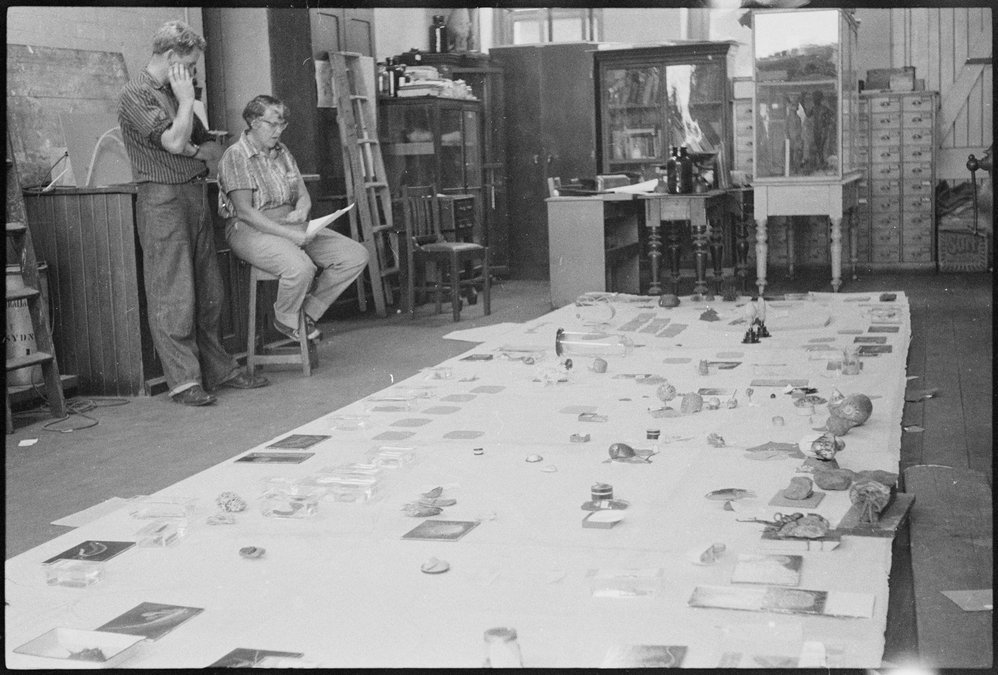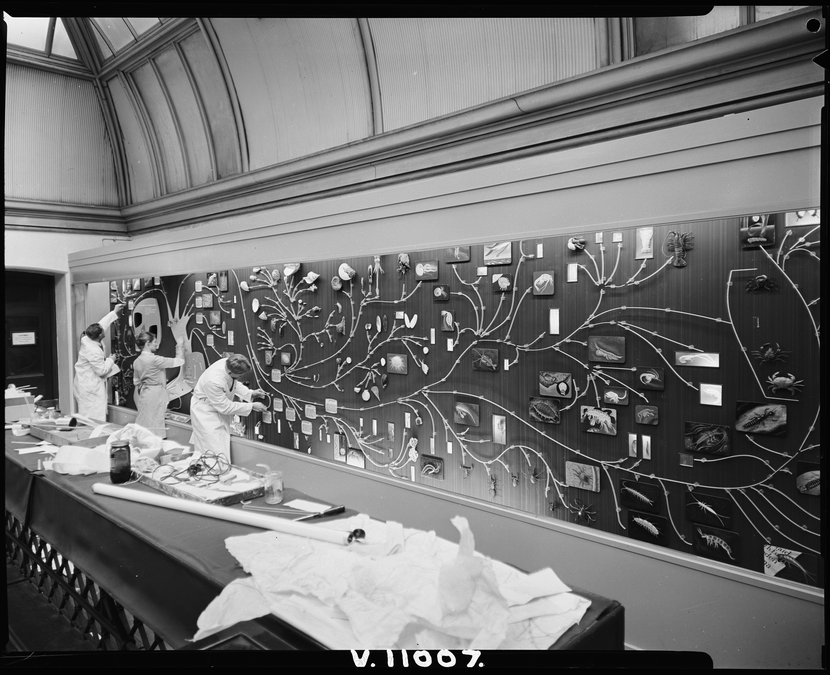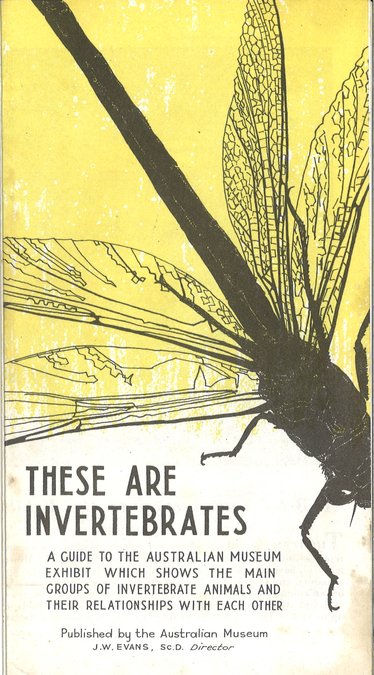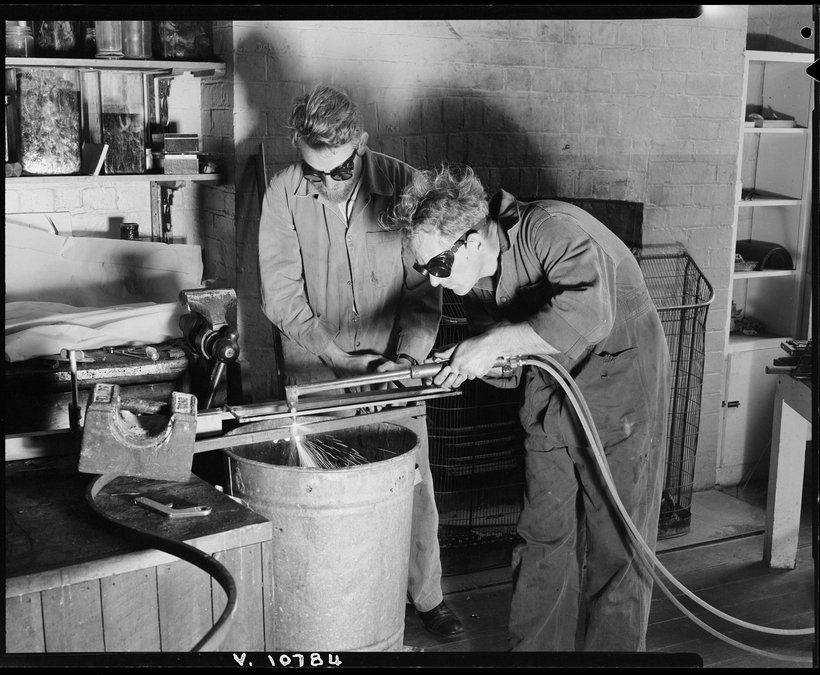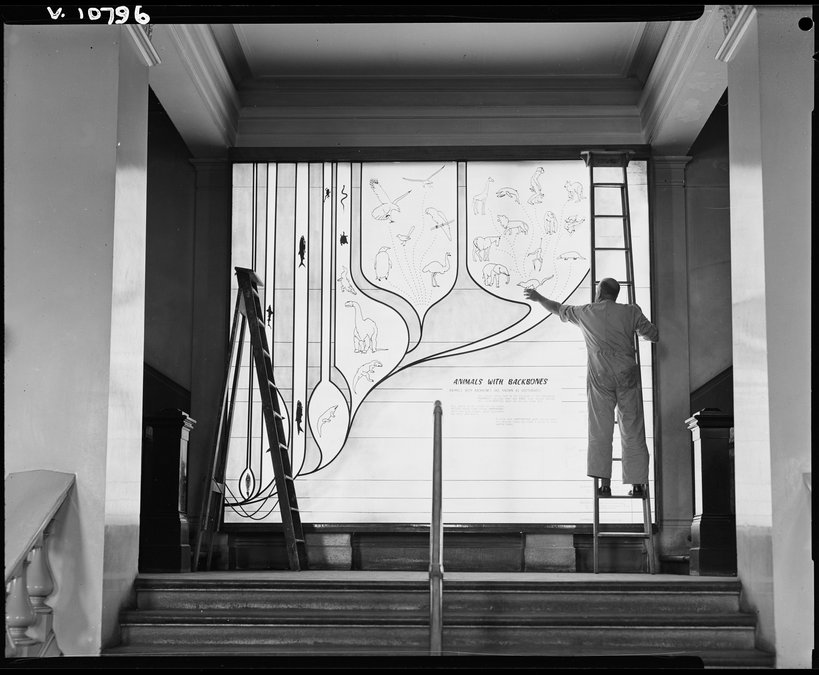Museum displays: Invertebrate and Vertebrate Tree
Australian Museum Photographic Archives
Our Australian Museum Photographic Archives hold many stories - some of our favourites, feature behind the scenes images of exhibitions at the Museum. The Vertebrate and Invertebrate Tree, both popular displays, opened in 1959 to commemorate the 100th anniversary of Charles Darwin's publication, ‘On the Origin of Species'. With the help of past Australian Museum annual reports and magazines we are able to research the story behind the displays.
Work in Progress
Behind the scenes, expert staff from our Preparation and Exhibitions departments construct exhibitions and displays to showcase research and scientific discovery at the Museum. The Invertebrate Tree display was created by a broad range of staff including ''curators, artists, modellers, casters, preparators, artificers and a ticket-writer". The photograph below shows the ‘work in progress’ designs for both displays, illustrating the process from conception to construction.

AMS351/V11005, acetate negative, ‘Galleries Invertebrate Tree under construction’, photographed by Howard Hughes, Digitised as part of the AM Photographic Archives Digitisation (PAD) Project.
Image: Howard Hughes© Australian Museum
The Invertebrate Tree
The Invertebrate Tree, also known as 'These Are Invertebrates’, was opened on July 31, 1959, by President of the Australian Museum Board of Trustees, Mr Wallace Wurth. The exhibit featured models, paintings and specimens housed in "wet and dry boxes". It measured "32 feet long and 9 feet high” with a total 215 specimens which included 55 paintings (by natural history illustrator Eileen Mayo) and 43 models. The opening of the exhibit was even televised and promoted in newspapers.
According to the 1959 annual report, the use of "plastic sheet boxes" were an important part of the preparation process, facilitating the display of invertebrate specimens. This was a technique later used in exhibits to replace glass. Lighting was another feature that enhanced the Invertebrate Tree - a total of 800 light globes were used. Although opened in 1959, some remaining labels were completed and installed from 1960-1961. An illustrated colour guide was prepared for the exhibit which included diagrams and outlined key features. The guide is now catalogued in the Australian Museum Archives.
The Invertebrate Tree proved popular and was even used for educational purposes by Zoology students from the University of Sydney.
The Vertebrate Tree
The Vertebrate Tree was a complementary display to the Invertebrate Tree. The exhibit measured 12 feet by 10 feet "installed at the head of the stairway facing the main public entrance" and showed the "inter-relationships of the main groups of animals with backbones and geological periods at which particular evolutionary developments took place".
The Vertebrate Tree had a steel frame featuring fibreglass backed with 60 fluorescent tubes. Below is a photograph of artist John Beeman and David Rae constructing the metal pieces of the display. Both Beeman and Rae "attended a welding course at Sydney Technical College” to create the Tree. John began working at the Museum in 1949 and in 1956 became the head of the newly created Department of Arts and Design. There was a shift in exhibitions at the Museum. Traditional cabinets of curiosities, housing a multitude of specimens, changed to streamlined exhibitions focused on design and education. The period saw modernised exhibits described as "the most ambitious and [technically] complex displays ever installed at the Museum".
See more from our Photographic Archives
Visit our Australian Museum photographic collections page and read featured stories.

